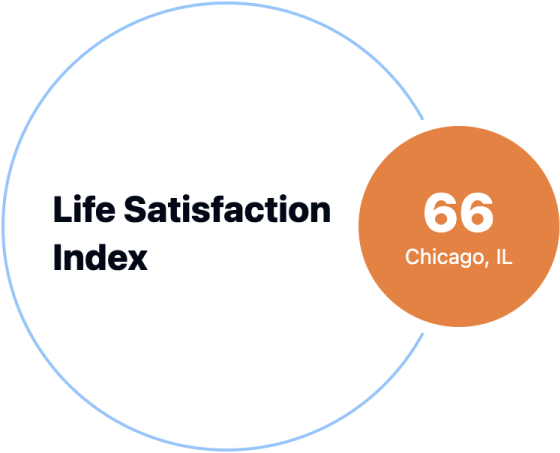About Us

Discovery of Quality of Life (QOL) Scales
In 1995/1996, while writing my doctoral dissertation on outcome measurements in marriage and family therapy research, I came across Quality of Life (QOL) scales and measurements. The QOL assessments were few and rudimentary in those days. I was intrigued with how perceived QOL was measured and improved with therapeutic interventions. People generally engage therapy when they feel that several aspects of their lives are under attack or spinning out of control. QOL is influenced by both internal and external factors. I spent my working life as a therapist addressing the internal forces (e.g., depression, anxiety, marital distress) that disrupted my patients' perceptions of their QOL.
Along the way, I became aware that where someone lived also impacted QOL perceptions especially when a patient felt they “had to get out of the community” or area to get more of the life they wanted to live. Some people wanted to be located with access to doctors for necessary medical condition treatments while others wanted more access to the outdoor activities they loved.
Development of the Life Satisfaction Index (LSI)
Recently, I was introduced to the publicly-available data being collected and reported by StatisNostics.com and thought that a model could be developed to capture some of the external factor influencers associated with a location where one might be or could be living that impact perceived QOL. The literature in the area of QOL has expanded significantly since the mid-1990's to include Life Satisfaction, Wellness, Well-Being, Fulfillment, and Thriving. The measured contributors to and indicators of QOL have expanded greatly as well.
So, I created the Life Satisfaction Index (LSI) out of data that is reported on various public databases around the country. I identified 14 factors such as access to grocery stores, safety, quality of schools, and proximity to quality medical facilities that influence how satisfied one feels about their life. I found more than 45 databases linked to addresses/locations that provide data that support the 14 factors and could be combined in a variety of equations to produce an LSI score associated with the addresses/locations. I developed a model, a series of equations combining and normalizing data across 14 factors to create the LSI. To the best of my knowledge, there is no model like the LSI in existence.

Personalization of the LSI Model
Life satisfaction is influenced by both external and internal factors. External factors include the quality of education available to one's children, economic and work opportunities, and transportation availability. Internal factors include mental health, marital and family relationships, and positive connections to friends and organizations such as religious institutions. My focus is on external factors which can be and have been measured and reported. Certainly, not every important external factor has been measured and reported. So, we have cobbled together 14 External Factors which have been linked to life satisfaction in the literature and which are available in publicly-reported databases.
It is clear that not everyone is the same and each person is likely to value the 14 External Factors differently. My original model did not take into consideration individual uniqueness. Therefore, I created an LSI model that allows the respondent to choose which Factors are most important to them in order to personalize the LSI score. These selections cause the selected Factors to be weighted more in the LSI score calculation than the non-selected Factors. Additionally, I wanted to recognize that not all preferences have the same importance. Often one preferred Factor will be more important than another preferred Factor. With this in mind, I added the ability to rank the preferred Factors causing the preferred Factors to have different weights from one another based on the rankings between them. This makes the LSI model both interactive and personalized to the respondent. There is certainly nothing like this LSI model in the public domain.
Our Mission
Our mission with the LSI model is to help people proactively engage with the external factors that influence their life satisfaction. Individuals can evaluate two locations with respect to how the location might impact their life satisfaction when considering a move or relocation. The model also allows for changing factor preferences and/or the rank order of the factor preferences to explore various scenarios with respect to comparative addresses. This personal flexibility allows the respondent to learn more about the influence of each factor on their life satisfaction.
It is important to remember that the LSI represents only part of the life satisfaction story. Internal factors such as mental health will influence perceived life satisfaction and external factors such as available affordable housing influence perceived life satisfaction. With some people, the internal factors are more influential with their perceptions, and with others, the external factors are more important. Also, sometimes internal factors will influence the way external factors are perceived (e.g., depression will have a profound impact on most perceptions about anything related to life) and at other times, external factors will impact the way internal factors are perceived (e.g., living in a safe, secure area can mitigate some anxiety about living conditions).
The LSI is for curiosity, confirmation, and fun. Compare two addresses with your preferences and then change the addresses or change the preferences or change the ranking of the preferences and see how the LSI scores change.